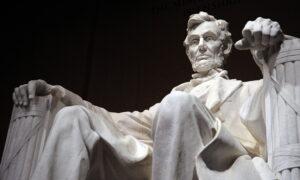Less than two years ago, we Americans came perilously close to losing our election system.
In November 2022, Americans elected a narrow Republican majority to the House of Representatives and thereby dodged a nuclear bomb. But only for now: Once the balance of power shifts back again, you can bet the election-rigging proposals will re-surface. And this time, they’ll pass.
To understand what kind of amendment we need, we first must understand how the original Constitution handled elections. Then we must examine how the Constitution’s system has changed over the years.
The Founders’ Election System
The Constitution has several provisions dealing with elections. The language is straightforward, and the historical evidence surrounding it is copious and clear. Here’s the background:- the qualifications of voters and officers;
- the “time of election,” meaning the terms of office and times for voting;
- the “places of election,” meaning the configuration of legislative districts and the locations for voting; and
- other administrative details, including whether voting was open or “by ballot” (secret), whether a plurality or a majority was needed to elect, whether election was direct or indirect, and how the votes were collected and counted.
How the Constitution Fits In
The Constitution left the “manner” of state elections almost entirely to the state legislatures.It also left the “manner” for choosing presidential electors to the state legislatures, except that, first, “no Senator or Representative, or Person holding an Office of Trust or Profit under the United States, shall be appointed an Elector” (Article II, Section 1, Clause 2); and, second, the Constitution empowered Congress to designate a “Time” for choosing presidential electors and a “Day” for them to vote for president and vice president (Article II, Section 2, Clause 4).
Some state legislatures opted to choose the electors themselves. Some delegated the choice to the people of their states. Some adopted hybrid methods. Today, every state legislature delegates the choice to the people.
For federal officials, the Constitution itemized qualifications for, and terms of, office. It specified that representatives were to be elected “by the People of the several States,” and senators by the state legislatures.
The Constitution addressed the other components of congressional elections in Article I, Section 4, Clause 1:
“The Times, Places and Manner of holding Elections for Senators and Representatives, shall be prescribed in each State by the Legislature thereof; but the Congress may at any time by Law make or alter such Regulations, except as to the Places of chusing [sic] Senators.”
The Supreme Court calls this the Elections Clause, but the Constitution has several “elections clauses.” A better name is the “Times, Places, and Manner Clause.”
The Times, Places, and Manner Clause thus deals with, one, the “Times” of election (other than the terms of office); two, the “Places,” which includes drawing congressional districts; and three, the “Manner of holding Elections.”
The Constitution’s framers invented the phrase “Manner of holding Elections” to mean everything not already covered in the older phrase “manner of election.” Examples are the form of the ballot, distribution of ballots, and methods of counting.
- As suggested earlier, it does not cover campaign practices. Regulation of campaigns was left to state law.
- It is limited to congressional elections. It does not apply to the presidency or to state office.
- The clause allows Congress to overrule state law on certain subjects. For example, if a state prescribes paper ballots, Congress may require electronic voting machines instead. I call this the “congressional override.”
The ‘Congressional Override’
During the debates over whether to ratify the Constitution, the Times, Places, and Manner Clause became very controversial. Many people thought it was dangerous to allow Congress to manipulate its own elections. Many who favored the Constitution also favored an amendment to delete the congressional override.Others who favored the Constitution assured the public that Congress’s power to override state law was only an emergency provision—that it would be used only if a state legislature refused to provide for congressional elections or, because of a foreign invasion or natural disaster, was unable to do so.
Yet, as we shall see, federal politicians have abused the congressional override and threaten to abuse it more.
To summarize, the original Constitution left control of state elections almost exclusively in the state legislatures. With a few exceptions, it also granted the state legislatures control over presidential contests. It gave the state legislatures the initial voice over congressional elections; Congress could override most state laws governing its own elections. Regulation of political campaigns was left with the states.







